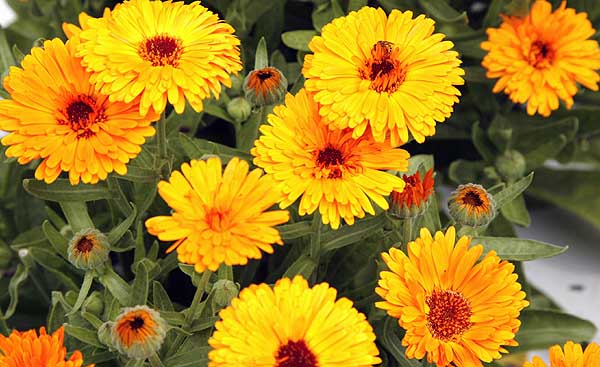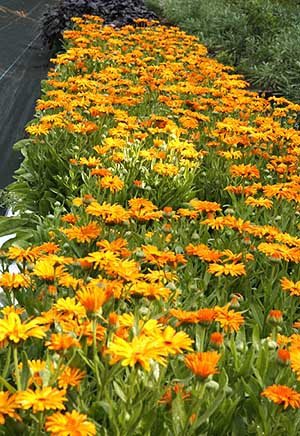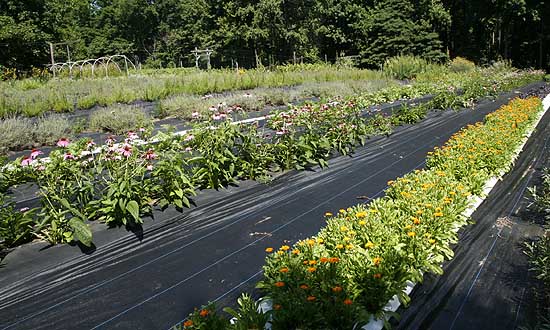This week the catnip and rue seeds have ripened and are at their peak for harvesting. These two plants need very different approaches in the harvesting process.
When harvesting seeds, all plants, and hence the seed, needs to be very dry. If not the plants and seeds tend to retain moisture and may develop mold. So instead of being able to harvest first thing in the morning when the temperatures are cooler we have to wait for around mid day when the plants have totally dried off before we can start. This makes the job more unpleasant if you don’t like too much heat.
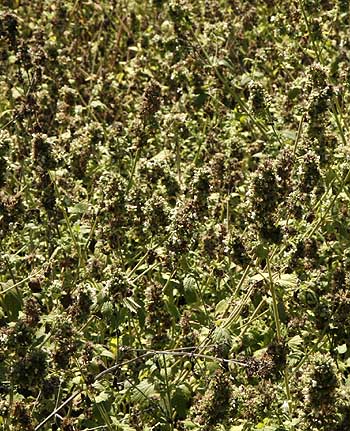
Catnip (Nepeta cataria) is grown in full sun in large beds. Its not bursting with seed. Fortunately its not to difficult to harvest the plants, we do this with a scythe and lop the plants off. In most cases they will regrow a fresh crop of leaves for late fall harvest, often they will flower again. It also means that harvesting is fairly rapid with most of the seed separation done later in the seed processing shed.
The other problem with heat is that the harvester tends to sweat more, and is wearing sunscreen a very important factor for working in the direct sun. The downside is that this tends to make the skin sticky. Add to that the person is working in hot sunny weather so they tend to sweat as well, making them even more sticky. Now place that sticky person in a field full of catnip plants bursting with seeds. The result tends to be a very interesting plant/person hybrid or someone that looks as if they have a very unpleasant disease. It also tends to mean that a lot of seed wasted in the shower drain. Sometimes it can take hours to remove all the seeds afterwards, and never ever put your hands in your hair while harvesting!
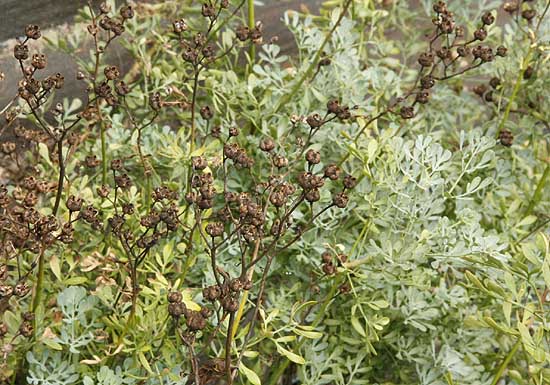
Rue (Ruta graveolens) is a different matter. It’s a semi shrub like bush with seed heads that need to be cut off individual, while a scythe can be used it usually more effective to use snips. This means that the harvest takes a lot longer. The later processing is faster because there is not as much extraneous material but the bulk of the work is done outside in the sunshine not in the shade of the shed. Additionally rue plants exude a sap which can be very irritating to some peoples skin and cause very unpleasant dermatitis or ‘rue rash’. Intolerance can also build up over time so just because someone was ‘immune’ last year does not mean that they will be this year. So to overcome this problem the harvester must have long sleeves, long pants and gloves. Not the most desirable attire in hot summer weather. We tend to draw lots each year as to who harvests the rue. Which takes much longer to harvest that then catnip due to the selective ‘pruning’.
This year the short straw has fallen to me, so I am just waiting for the dew to evaporate off the rue bushes before I gear up and go harvest in the heat. This is one of the days when being a farmer is not quite so pleasant.

